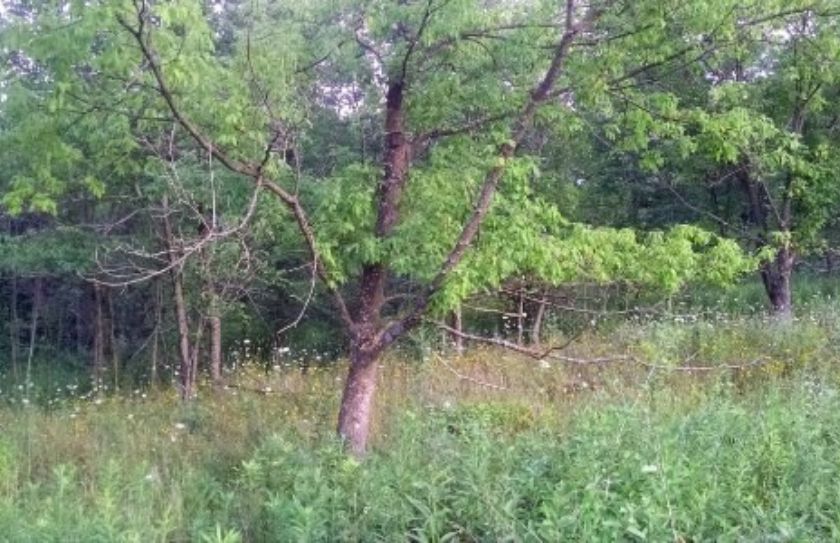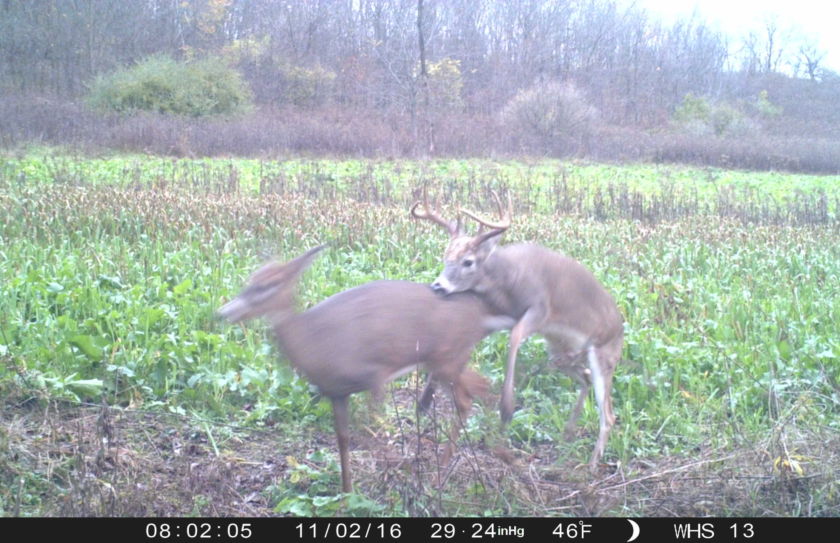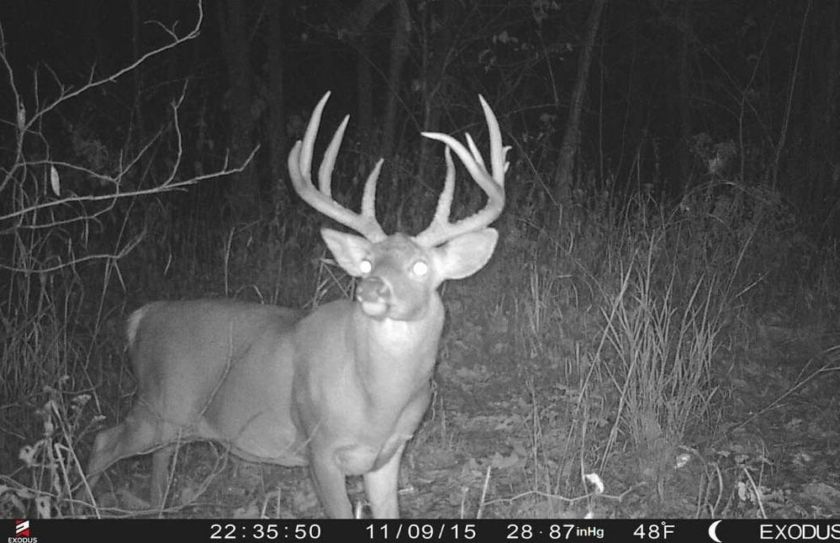*Make sure that you aren't spooking game during your trail cam survey!
Would you like to complete a trail cam survey on your land this hunting season, that actually works? Traditional science based methods involve placing X number of cameras on a corn pile on your land for every X number of acres, for up to 2 weeks of time, before the season even begins. However, whether your land is actually being run well or not, this method will typically give you very little insight into the herd make-up of your neighborhood. There is a great strategy you can employ that I will detail below for when and where you should conduct a trail cam survey however, here are a few solid reasons why traditional census methods will most likely leave you scratching your head in frustration:
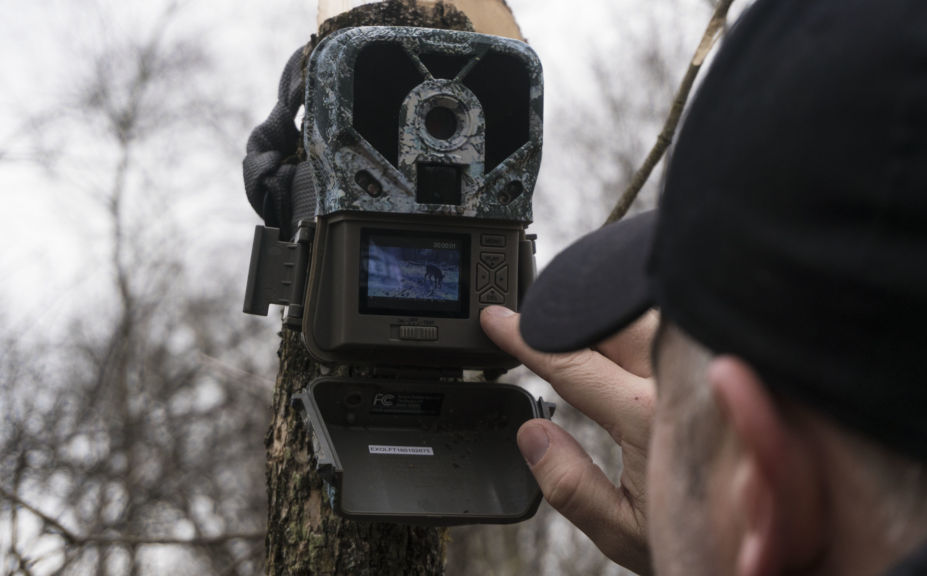
*The first step towards completing an effective survey, is to use a high quality, non invasive trail camera!If the location sticks out or the trail cam contains red-glowing IR bulbs, a change needs to be made.
1) Most bucks do not move to their typical Fall home range (which is a completely different habitat type compared to their Summer range) until late September to late October. The number of bucks you discover could range from severely high to none at all, which both could be misleading as it relates to your ability to shape your herd and hunting success.
2) From personal experience, it takes a long time in most of the whitetail-rich hunting States (if even legal) for a mature buck to visit a pile of corn. In just 1 example of many, in MI's UP of MI there were seasons that I captured up to 17 bucks using my trail cam survey techniques, while neighboring bait pile hunters on public land would capture just a handful. In fact they routinely missed the majority of the oldest bucks in the neighborhood.
3) Unless your small parcel is optimized for structured deer movements during the hunting season, you will miss major portions of mature buck movements that you can potentially survey.

*Don't forget to check out my trilogy of Advanced Whitetail Strategy books, including my latest,"Mature Buck Success by Design".
When Should You Begin Your Trail Cam Survey?
Your #1 time to influence a herd is during the hunting season, in particular during the middle of the hunting season. The impact of a solid trail cam survey during the season, can reveal to you an extremely high % of the local neighborhood bucks, but what about the females? Does are easy. What I mean by that is that they are home-bodied whitetails that feature extremely consistent and compact movements. Not only should estimating a fairly definitive number of does that frequent your land be fairly efficient if your land is optimized for structured deer movements, but those does should be fairly easy to harvest if needed, to control population numbers.
Figuring out exactly how to effectively complete a camera survey on your land comes next, but once you learn to harness the power of taking a trail cam survey during the middle of the hunting season, an entirely new world of strategy awaits! Your ability to capture nearly all of the mature bucks in your neighborhood by trail cam during the Fall, allows you to create a self check-up for how your habitat and hunting efforts are progressing. Do you see a large % of the bucks you capture by trail cam? Where are most of the mature bucks coming from? Do you collect a higher % of older or younger bucks on your land? By conducting a trail cam survey during the hunting season, you will be able to tap into the random wanderings of rut crazed monsters, as well as to discover a fairly definitive population that focuses on your land nearly every day. This is allows you to hunt specific bucks with a purpose, to analyze the effectiveness of your habitat efforts, as well as to estimate the overall buck age structure and sex ratios of the local herd. Beginning your census during the deer season, allows you to most accurately reflect the local deer population at a time when you can influence the herd the most, through high quality habitat and hunting strategies.
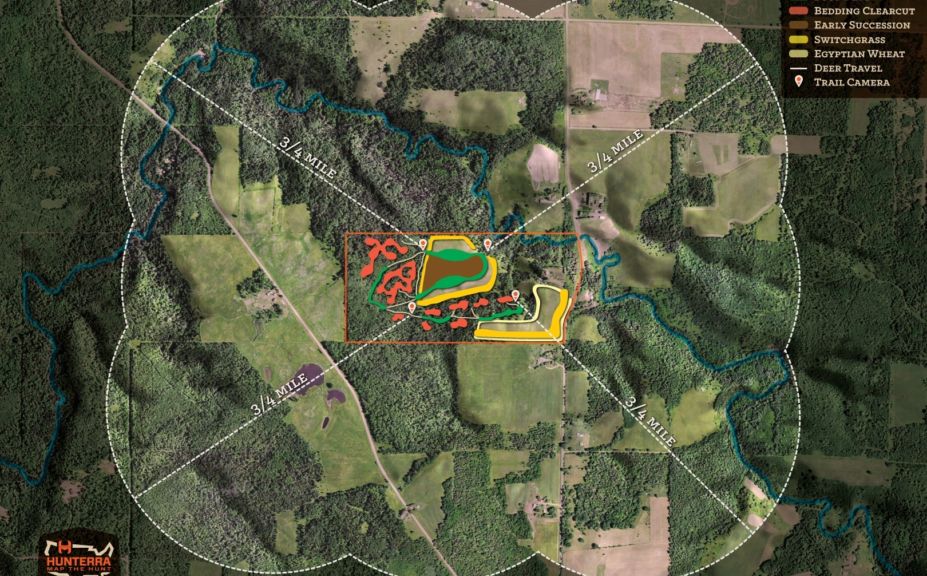
*Ben Harshyne fromHUNTERRA, teamed up with us to create this potential trail cam survey capture zone, for one of my Midwest clients. By covering your corners of high established deer movement patterns with a trail cam during the hunting season, the level of accuracy for your deer survey can be extremely high not only your own land, but for the entire neighborhood.
Accurate Deer Survey Methods
An accurate trail cam survey begins with a high level of consistent attraction. The majority of my client's parcels fall somewhere around 100 acres, but that number is a little deceiving. Although the average may be around 100, a large number of 30-60 acre parcels are overshadowed by a smaller number of 200-300 acre parcel sizes, or larger. Whether you own 20 acres or 500, your land needs to be adequately supported by food. What that means is that every acre of you land that you expect to hold deer on, needs to be supported by a certain amount of food. Also, the food on your land needs to be consistent for the entire season, so that you can expect to evenly distrubute the deer herd across your habitat, without an every changing pattern of food that is peaking in attraction and nutrition. As you can see by the HUNTERRA created parcel example I have included above, the amount of food (green) is designed to support every corner of the land, to varying degrees. The corners of a 40 acre parcel can be covered by 3-4 trail cams, a 100 acre parcel can be adequately surveyed by 5-6 cameras and a 300 acre parcel can typically be covered by 6-10 cameras at the most. It doesn't take a huge number of cameras when you are observing established, heavily used lines of deer movements.
The food sources are not only designed to attract and hold deer, but to move hidden deer across the entire landscape of the parcel, while setting up high quality stand locations. With an even distribution of food, individual doe family groups will relate to small, micro movements of bedding and food sources on a highly defined pattern of daily deer usage. Each food sources offers the same diversity, creating no more reason for 1 doe family group to be in 1 micro movement, over another. The doe herd can then self-align based on order of dominance, and a boring consistency of movement can be continued throughout the entire season. When that consistent daily movement is created through a structured, pattern of food supported cover then doe family groups not only become easy to target if desired, but I have experienced that individual bucks will relate to each movement. This offers you can exceptional opportunity to complete a highly accurate trail cam survey on your land, as well as to hunt the land with a highe degree of success.
By moving deer within consistent daily patterns that repeat the entire season, you can establish trail cameras in the corners of your habitat within those movements, that allow you to capture a high % of the bucks that relate to each area. Strong lines of movement contain high pellet counts, urine scent, rubs and scrapes, which are all great features for bucks to not only relate to, but gravitate to and follow. By looking at the map from HUNTERRA, you can see that whether it is a travel corridor, food source or bedding area, the deer herd has the opportunity to establish highly defined daily movements. Bucks move during the peak of the hunting season, and it is common for deer to travel between a 1/2 mile to 3/4 of a mile within a pattern of core movement, that will include the corners of parcels less than 100 acres. Even if a buck chooses to establish his core daytime bedding area on a neighbor's parcel nearly a mile away, it is common for him to visit your land at some point during the season, follow a quality line of movement that doe family groups are already using to a very high degree, and to capture a picture of him. It is an extremely precise way to not only capture trail cam pictures of every buck that moves in and about your land, but nearly every buck that is within a 1/2 mile to 3/4 mile distance from your land.
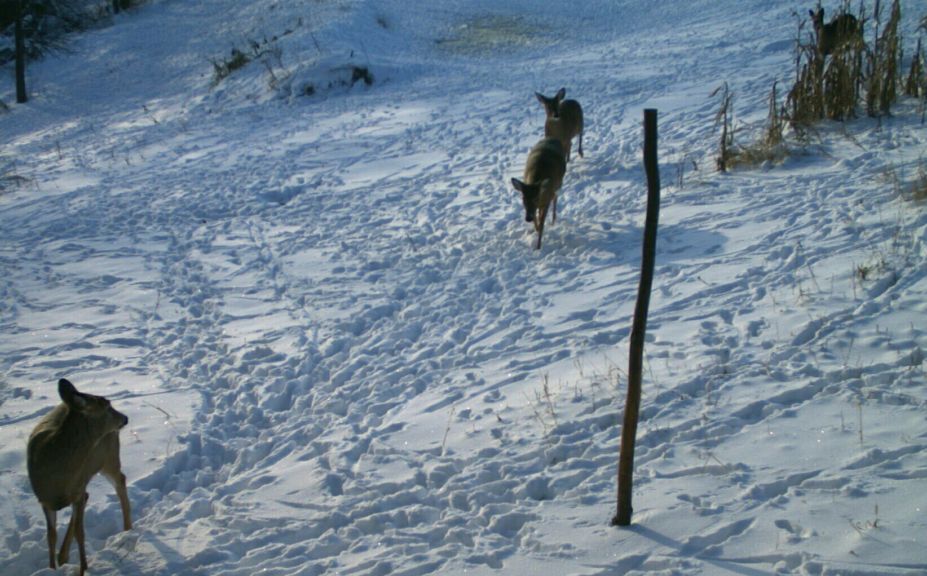
*Establishing highly defined daily deer movement patterns all begins with the doe family groups. Their movements should be so boringly consistent, that you should be able to notice if a random tresspasser or major predator has crossed through your land, just by the timing of the disturbance to doe family group movements. Are your habitat, herd and hunting efforts working? A sure measure is an"Easy Hunt Deer Herd".
What can you conclude with your hunting season trail cam survey?
Again, the does are the easy part! In fact, much of the time a couple of well placed observation stands near established destination food sources can allow 2-3 hunters to see nearly all of the does on a given parcel of land, during a quality evening sit. With a couple of trail cameras over large food sources and a few successful evening sits each, 2-3 hunters can gather a level of precision for estimating doe numbers that is hard to beat. When you combine your doe family group findings with your overall number of individual buck pictures, a few aspects of hunting and habitat strategy will really stick out!
1) Does your land appear to be less attractive to bucks, as they age? Often your land will either repel or attract mature bucks during the season.
2) What is your impact on established deer movements, following a heavy weekend of hunting activity? Major shutdowns of movement should make you rethink your hunter access routes.
3) How precise are individual buck movements? Often as a buck matures it is common for your trail cam survey to reveal that his pattern actually becomes much more defined as he slots into his preferred territory.
4) How many antlered bucks do you have, compared to the number of does and fawns? Typically when you include the trail cam pictures of bucks from well outside of your land, it is common for the total number of unique bucks to equal the total number of does and fawns.
5) Do your findings reveal holes of obvious habitat decline during the hunting season? Doe family groups will often stick around for a much longer period of time, when the quality of habitat is deminishing. However, bucks will often exit quickly, in search of greener pastures.
I you use the methods described in this article to cover the corners of established, consistent and structured deer movements on your land, you can capture a very high % of trail cam pictures of the overall herd on your land, as well as beyond your parcel borders. Is you habitat up to the test? Is your cover supported by enough food to maintain a level of attraction for the entire season? Are your hunting efforts negatively impacting your herd building efforts? Try to use an in-seasion trail cam survey to not only accurately reflect the deer numbers within the neighborhood, but to continually hone your overall habitat and hunting strategy.
